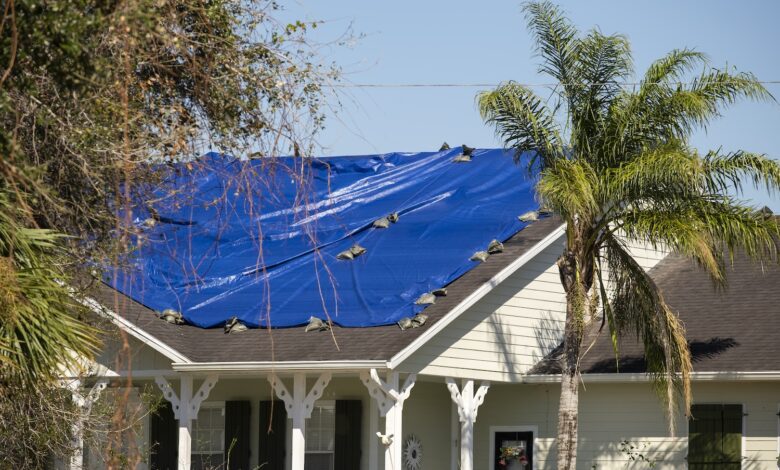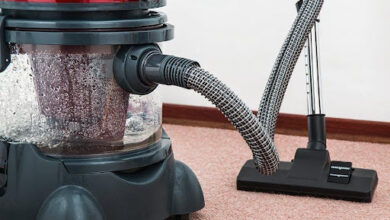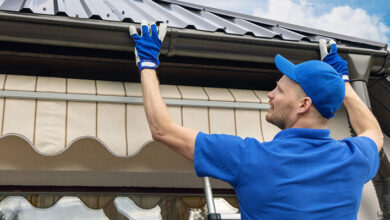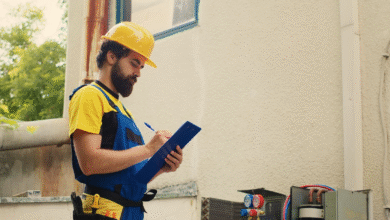The Silent Threat: How Minor Roof Leaks Lead to Major Structural Damage

Introduction
Not all roof problems arrive with dramatic flair. Some creep in quietly—a small stain on the ceiling, a musty smell in the attic, or a shingle that looks slightly out of place. It’s easy to ignore these signs, especially when the roof seems to be doing its job: keeping out the rain and holding strong against the elements.
But minor roof leaks are deceptive. They rarely stay small. Left untreated, even the tiniest leak can trigger a chain reaction of issues—impacting your home’s insulation, air quality, framing, and overall structural integrity.
Understanding how leaks spread, what they compromise, and why timely intervention is critical can save you from facing far larger repair bills—or even a full roof replacement—in the future.
The Leak Starts Where You Can’t See It
Roof leaks rarely announce themselves with a drip in the middle of the living room. They begin in hidden spaces: beneath shingles, around flashing, or near roof penetrations like vents and chimneys.
Often, water enters through:
- Cracked or missing shingles
- Deteriorated flashing or sealant
- Nail pops or improper fastening
- Ice dams during winter months
Once inside, water doesn’t always fall straight down. It travels along rafters, across beams, or down into walls—making the origin of the leak difficult to locate and the damage hard to predict.
Stage One: Insulation and Wood Take the First Hit
As water seeps into the attic, the first casualties are usually insulation and wooden components.
- Insulation loses effectiveness when damp, trapping less heat and forcing HVAC systems to work harder.
- Wooden rafters and decking absorb moisture, leading to swelling, warping, and eventual rot.
- Mold begins forming in as little as 24–48 hours under the right conditions.
At this point, the leak might still be invisible from inside your home. But it’s already compromising energy efficiency and the integrity of the roofing system.
Stage Two: Drywall, Paint, and Ceilings Begin to Suffer
If the leak continues, water eventually makes its way down through attic insulation and into the ceilings or walls of living spaces.
Signs often include:
- Yellow or brown ceiling stains
- Bubbling paint or peeling wallpaper
- Warped drywall
- Musty odors near vents or corners
These aesthetic damages are often the first time homeowners realize something is wrong. Unfortunately, by this stage, the damage beneath the surface may already be extensive—and expensive.
Stage Three: Mold, Mildew, and Air Quality Problems
Moisture inside a closed structure creates a perfect environment for mold spores to grow and spread. These can thrive in:
- Wall cavities
- Ceiling joists
- Around HVAC ducts
- Behind insulation
Mold doesn’t just harm building materials—it affects the air you breathe. For households with asthma, allergies, or respiratory conditions, indoor mold can aggravate symptoms and pose serious health risks.
What started as a minor roof repair issue now becomes a broader environmental and health concern.
Stage Four: Structural Framing and Foundation Risks
If left unchecked for months—or in some cases, years—chronic roof leaks can weaken key structural components:
- Joists may begin to rot and lose load-bearing capacity.
- Wall studs exposed to ongoing moisture can warp or split.
- Water infiltration near the roofline can lead down through framing and into basements or crawl spaces.
The longer the exposure, the more the structure shifts and weakens, increasing the risk of sagging, cracking, and misalignment throughout the home.
At this stage, roof replacement may no longer be enough. Full-scale restoration and reconstruction might be necessary.
A Small Leak Can Cost Big
Here’s a breakdown of how costs escalate when roof leaks are ignored:
| Leak Stage | Typical Repairs Needed | Estimated Cost Range |
| Initial Leak | Shingle replacement, flashing reseal | $200 – $500 |
| Attic Moisture | Insulation removal, wood drying | $800 – $2,000 |
| Interior Damage | Drywall repair, paint restoration | $1,000 – $3,000 |
| Mold Remediation | Mold testing, removal, air filtration upgrades | $2,500 – $6,000+ |
| Structural Repairs | Joist and stud replacement, re-framing | $5,000 – $15,000+ |
These figures vary by region and severity, but they illustrate a clear point: acting early is far more cost-effective than reacting late.
Why Many Leaks Go Undetected
Minor roof leaks often go unnoticed due to:
- Lack of attic inspections
- Seasonal damage that worsens slowly
- Small, hidden entry points
- Mild weather that masks symptoms
That’s why annual inspections by a qualified roofing company are crucial—even if you haven’t noticed any issues. A trained eye can spot vulnerabilities before they turn into full-blown failures.
Companies like Neal Roofing & Waterproofing often identify and resolve small issues during routine inspections, preventing the need for larger repairs or emergency interventions down the road.
Preventing Damage Starts with Awareness
Here’s how to stay ahead of roof leak escalation:
- Inspect attics seasonally, especially after major storms or snowmelt.
- Check ceilings and corners for signs of moisture or stains.
- Clean gutters regularly to ensure proper water drainage.
- Schedule annual professional inspections, even for newer roofs.
- Address small issues immediately—missing shingles, nail pops, and cracked flashing.
Prevention doesn’t require large investments—it just requires consistency and attention.
Final Thoughts
A minor leak might not feel urgent—but its consequences always are. What starts as a drop can ripple into costly repairs, poor air quality, and serious structural damage.
Your roof doesn’t just need to look good from the curb. It needs to work silently and consistently—day in, day out—to protect the entire framework of your home.
The next time you see a drip, stain, or shadow that feels off, don’t wait. Trust your instincts, and take that small concern seriously. A few shingles now may save you thousands later.




